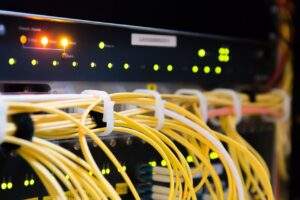Boron Nitride Nanosheets: Protective Barriers for Metals
Metal Decomposition
–Corrosion Hazards
Metal corrosion is a common phenomenon in which refined metals are converted to their oxidized forms or other compounds and can cause many problems. On the one hand, collapse is dangerous for infrastructure. Pipes can leak and buildings can collapse. On the other hand, preventing and repairing corrosion is expensive. The US spends nearly $300 billion each year on corrosion problems. Therefore, various methods and materials are used to protect metals from corrosion.
Figure 1. Metal Corrosion
–Methods of Protecting Metals from Corrosion
A broad range of methods is used to protect metals, from design to manufacturing to the use of metals.
- Design: Designers should consider corrosive environmental factors such as salt water in advance. Surface moisture and dirt must be removed. Narrow crevices must be eliminated to avoid crevice corrosion.
- Coating: The protective coating acts as a layer that protects the metal from corrosive elements. Various materials such as boron nitride nanosheets are used to create protective coatings.
- Environmental Control: Store metal tools in a clean, dry place and try to control sulfur, chloride and oxygen levels over time.
- Cathodic protection: This method uses a reverse current on the surface.
- Routine maintenance: Routine maintenance is as important as the methods above. Keep your equipment clean.
BN Nanosheets as Protective Barriers
–What Are Boron Nitride Nanosheets?
Boron nitride nanosheets are two-dimensional boron nitride obtained by chemical vapor deposition (CVD). They possess desirable properties for use as protective barriers.
- Thermal stability: BN nanosheets have better oxidation resistance than graphene, and their thermal stability and electrical insulating properties make them suitable for protective coatings.
- Electronic insulation: This material is an excellent dielectric substrate, and its insulation properties are largely independent of the thickness.
- Wide bandgap: BN nanosheets have a wide bandgap of about 5.9 eV, which graphene does not.
–Advantages of BN Nanosheets as Protective Barriers
Graphene was previously used as a protective coating, but instead BN nanosheets have been used with the following properties:
- BN nanosheets appear more transparent in visible light due to their larger bandgap.
- They may avoid potential galvanic corrosion due to their electronic insulation.
Case study: Copper Foil Protection by BN Nanosheets
The protective effect of BN nanosheets is explained based on specific examples.
In this case, the bare copper foil was heated in air at 250 °C for 100 hours. The control group used the same bare metal parts with BN nanosheet coating. The performance of each group under high temperature was observed as follows.
- The control group with bare metal foil and protective coating initially appeared similar metallic color.
- After 2 hours, black oxidation occurred on the surface of the bare copper foil, while the control group had little discoloration.
- With continuous heating, the bare metal pieces turned orange and even black.
- Oxidation was also observed by scanning electron microscopy (SEM) and energy dispersive X-ray spectroscopy (EDX).
The corrosion resistance performance of the BN nanosheet protective coating was extensively demonstrated in this case.
Conclusion
Boron nitride nanosheets provide an effective protective barrier against metals due to their stability and dielectric properties. Advanced Ceramic Materials (ACM) offers high quality boron nitride nanosheets in different sizes. For more information on BN ceramic materials, please visit https://www.preciseceramic.com/.







